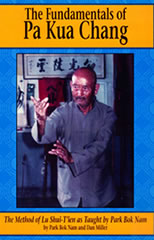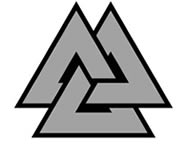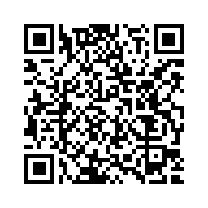
Author : Park Bok Nam
Title : The fundamentals of Pa Kua Chang Volume 1 The method of Lu Shui-T’ien as taught by Park Bok Nam
Year : 1993
Link download : Park_Bok_Nam_-_The_fundamentals_of_Pa_Kua_Chang_Volume_1.zip
Preface. After the first issue of the Pa Kua Chang Newsletter had been published in November 1990, I approached Bok Nam Park to ask if he would be interested in being interviewed for the publication. Park's response to the first newsletter was, "History does not make progress, students need to learn principles." His point was that martial arts publications print too much history, generalized information, and abstract theory when what students need is a detailed explanation of fundamental principles. Park believes that if the student does not understand the principles upon which the art is based, he or she will not progress. "Respect for parents is good, but when the baby is hungry he does not want to know who his father is and who his grandfather is - he wants food. After his belly is full, then you can tell him about his ancestors," Park added. Point well taken. Pa Kua Chang footwork, sparring, ch'i circulation, ch'i development, meditation, breathing, palm movements, how to move the body with the steps, how to combine speed and balance with ch'i, how to develop power - these are some of the topics Park wanted to discuss in detail. Since arriving in the United States in 1987, Park has observed that students in this country know that Pa Kua Chang practitioners walk the circle, practice eight "mother" palms, and execute twisting and turning movements while walking and changing in circular patterns, but he does not feel that many students know why these things are practiced, how they are specifically applied in self-defense or ch'i development, and how they relate to the fundamental theories of the I-Chitig, the Wu Hsing (Five Phases), and Yin-Yang. Park contends that if Pa Kua students were asked why they walk a circle or how each of the "mother palms" is used specifically, most students would not be able to give an explanation that displays any depth of understanding. Because of the level of detail Park wished to discuss all of these topics, he asked if I would be willing to publish a series of articles which would explain Pa Kua Chang basic principles. I agreed with Park's opinion that martial arts publications should present more practical details concerning martial arts practice and application and I had received several letters from subscribers asking me to print this kind of technical information. Thus, we initiated a series of articles in the Pa Kua Chang Newsletter (now the Pa Kua Chang Journal) which discussed Park's views and instruction of the practice and application of Pa Kua Chang fundamental principles. Our initial interview was conducted sitting in his office. He did not demonstrate any of his Pa Kua Chang, we just talked. Although I had not actually seen him do anything, I was impressed with his systematic approach to teaching and emphasis on fundamental training. Over the next few months Park and I met several times and he showed me a number of the exercises and drills he wanted to have explained in the newsletter. Although he showed me some ch'i kung and some Pa Kua palm changing and palm striking exercises, his emphasis in these meetings was placed on Pa Kua Chang footwork. I still had yet to see Park demonstrate a Pa Kua Chang form or show any Pa Kua martial applications, however, I could see that he was exceptionally skilled in terms of body flexibility, body control, and speed. His smooth, precise, catlike movements when demonstrating Pa Kua stepping exercises indicated a high level of skill. I was interested in learning more and so at this point in time I asked Park if I could change my status from reporter to reporter/student. Park agreed and I began studying with him at his school in Richmond, Virginia for five hours every Saturday afternoon. ...

Demolins Edmond - L'éducation nouvelle
Auteur : Demolins Edmond Ouvrage : L'éducation nouvelle Année : 1898 Lien de téléchargement :...














